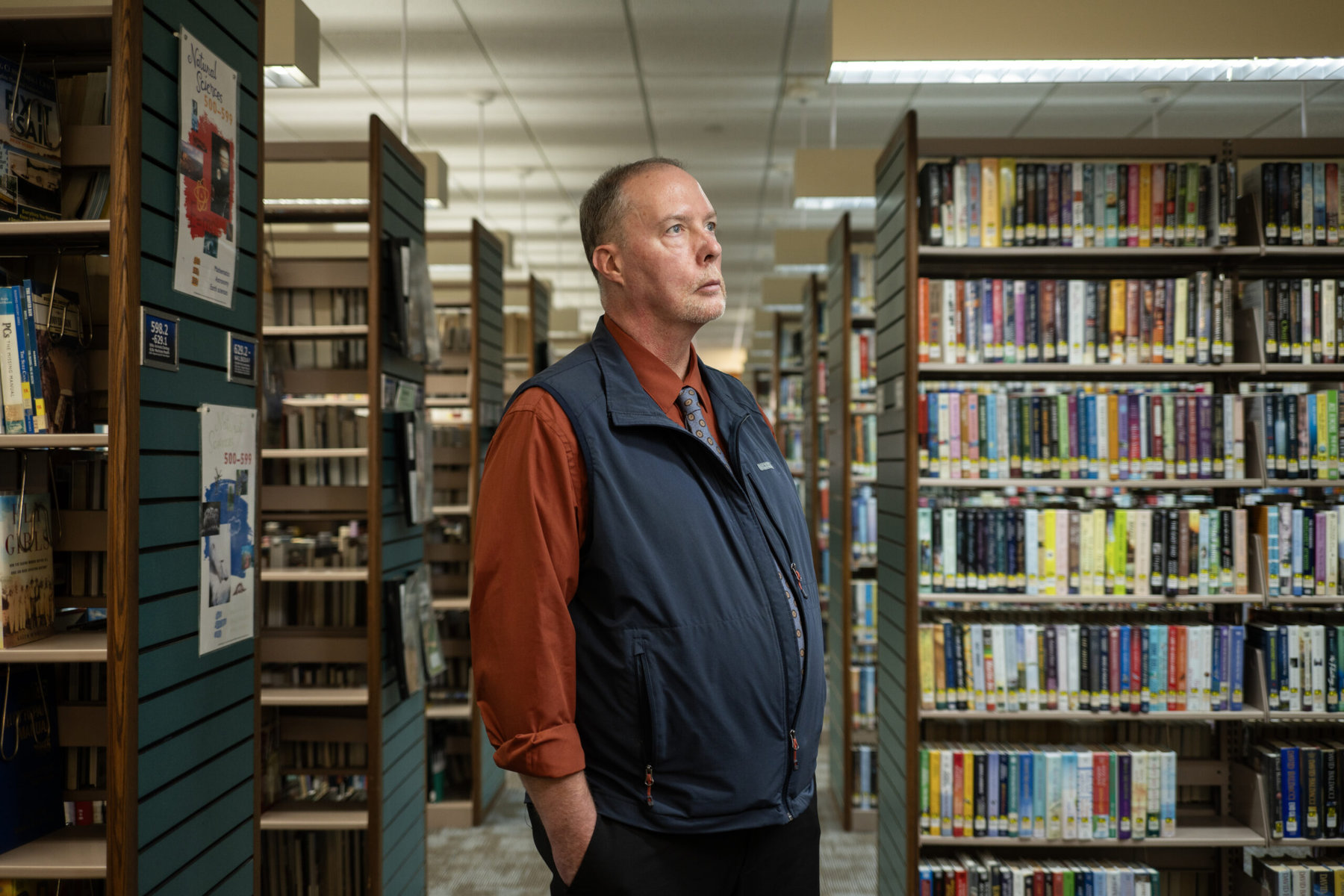medicine
Cartoon: Medical maladies
Follow me on Mastodon, Bluesky, Facebook, Instagram, or at my website.
The Smart Heart: How AI Is Sharpening Cardiovascular Medicine
When Swiss cardiologist Thomas F. Lüscher attended an international symposium in Turin, Italy, last summer, he encountered an unusual “attendee:” Suzanne, Chat GPT’s medical “assistant.” Suzanne’s developers were eager to demonstrate to the specialists how well their medical chatbot worked, and they asked the cardiologists to test her.
An Italian cardiology professor told the chatbot about the case of a 27-year-old patient who was taken to his clinic in unstable condition. The patient had a massive fever and drastically increased inflammation markers. Without hesitation, Suzanne diagnosed adult-onset Still’s disease. “I almost fell off my chair because she was right,” Lüscher remembers. “This is a very rare autoinflammatory disease that even seasoned cardiologists don’t always consider.”
Lüscher — director of research, education and development and consultant cardiologist at the Royal Brompton & Harefield Hospital Trust and Imperial College London and director of the Center for Molecular Cardiology at the University of Zürich, Switzerland — is convinced that artificial intelligence is making cardiovascular medicine more accurate and effective. “AI is not only the future, but it is already here,” he says. “AI and machine learning are particularly accurate in image analysis, and imaging plays an outsize role in cardiology. AI is able to see what we don’t see. That’s impressive.”
 The cardiology team at Royal Brompton Hospital in London uses AI to speed up calculations based on MRIs. Credit: Andriy Blokhin
The cardiology team at Royal Brompton Hospital in London uses AI to speed up calculations based on MRIs. Credit: Andriy Blokhin
At the Royal Brompton Hospital in London, for instance, his team relies on AI to calculate the volume of heart chambers in MRIs, an indication of heart health. “If you calculate this manually, you need about half an hour,” Lüscher says. “AI does it in a second.”
Few patients are aware of how significantly AI is already determining their health care. The Washington Post tracks the start of the boom of artificial intelligence in health care to 2018. That’s when the Food and Drug Administration approved the IDx-DR, the first independent AI-based diagnostic tool, which is used to screen for diabetic retinopathy. Today, according to the Post, the FDA has approved nearly 700 artificial intelligence and machine learning-enabled medical devices.
The Mayo Clinic in Rochester, Minnesota, is considered the worldwide leader in implementing AI for cardiovascular care, not least because it can train its algorithms with the (anonymized) data of more than seven million electrocardiograms (ECG). “Every time a patient undergoes an ECG, various algorithms that are based on AI show us on the screen which diagnoses to consider and which further tests are recommended,” says Francisco Lopez-Jimenez, director of the Mayo Clinic’s Cardiovascular Health Clinic. “The AI takes into account all the factors known about the patient, whether his potassium is high, etc. For example, we have an AI-based program that calculates the biological age of a person. If the person in front of me is [calculated to have a biological age] 10 years older than his birth age, I can probe further. Are there stressors that burden him?”
Crushed by negative news?
Sign up for the Reasons to be Cheerful newsletter.
[contact-form-7]
Examples where AI makes a sizable difference at the Mayo Clinic include screening ECGs to detect specific heart diseases, such as ventricular dysfunction or atrial fibrillation, earlier and more reliably than the human eye. These conditions are best treated early, but without AI, the symptoms are largely invisible in ECGs until later, when they have already progressed further.
Currently, the AI tools are mainly developed and used at elite clinics with advanced research departments, such as the Mayo Clinic or the clinics associated with Oxford University. “From the moment we enter a patient’s data into our system, AI helps guide the patient’s path in the clinic, screens for diseases and assists with interpreting test results,” says Charalambos Antioniades, British Heart Foundation chair of cardiovascular medicine and cardiologist at Oxford University. “When the patient undergoes an ECG or CT scan, the AI diagnosis is automatically shown on the screen.”
Antioniades’ team at the University of Oxford’s Radcliffe Department of Medicine analyzed data from over 250,000 patients who underwent cardiac CT scans in eight British hospitals. “Eighty-two percent of the patients who presented with chest pain had CT scans that came back as completely normal and were sent home because doctors saw no indication for a heart disease,” Antioniades says. “Yet two-thirds of them had an increased risk to suffer a heart attack within the next 10 years.” In a world-first pilot, his team developed an AI tool that detects inflammatory changes in the fatty tissues surrounding the arteries. These changes are not visible to the human eye. But after training on thousands of CT scans, AI learned to detect them and predict the risk of heart attacks. “We had a phase where specialists read the scans and we compared their diagnosis with the AI’s,” Antioniades explains. “AI was always right.” These results led to doctors changing the treatment plans for hundreds of patients. “The key is that we can treat the inflammatory changes early and prevent heart attacks,” according to Antioniades.
The British National Health Service (NHS) has approved the AI tool, and it is now used in five public hospitals. “We hope that it will soon be used everywhere because it can help prevent thousands of heart attacks every year,” Antioniades says. A startup at Oxford University offers a service that enables other clinics to send their CT scans in for analysis with Oxford’s AI tool.
 AI can use electrocardiograms to detect certain heart conditions much earlier than would otherwise be possible. Credit: Chaikom / Shutterstock
AI can use electrocardiograms to detect certain heart conditions much earlier than would otherwise be possible. Credit: Chaikom / Shutterstock
Similarly, physician-scientists at the Smidt Heart Institute and the Division of Artificial Intelligence in Medicine at Cedars-Sinai Medical Center in Los Angeles use AI to analyze echograms. They created an algorithm that can effectively identify and distinguish between two life-threatening heart conditions that are easy to overlook: hypertrophic cardiomyopathy and cardiac amyloidosis. “These two heart conditions are challenging for even expert cardiologists to accurately identify, and so patients often go on for years to decades before receiving a correct diagnosis,” David Ouyang, cardiologist at the Smidt Heart Institute, said in a press release. “This is a machine-beats-man situation. AI makes the sonographer work faster and more efficiently, and it doesn’t change the patient experience. It’s a triple win.”
However, using artificial intelligence in clinical settings has disadvantages, too. “Suzanne has no empathy,” Lüscher says about his experience with Chat GPT. “Her responses have to be verified by a doctor. She even says that after every diagnosis, and has to, for legal reasons.”
Also, an algorithm is only as accurate as the information with which it was trained. Lüscher and his team cured an AI tool of a massive deficit: Women’s risk for heart attacks wasn’t reliably evaluated because the AI had mainly been fed with data from male patients. “For women, heart attacks are more often fatal than for men,” Lüscher says. “Women also usually come to the clinic later. All these factors have implications.” Therefore, his team developed a more realistic AI prognosis that improves the treatment of female patients. “We adapted it with machine learning and it now works for women and men,” Lüscher explains. “You have to make sure the cohorts are large enough and have been evaluated independently so that the algorithms work for different groups of patients and in different countries.” His team made the improved algorithm available online so other hospitals can use it too.
Another issue is trust. “Many doctors and patients don’t trust AI because it’s basically a black box,” says Lopez-Jimenez at the Mayo Clinic. “For example, when someone asks, ‘Why does AI recognize atrial fibrillation though the ECG looks completely normal?’ The short answer is: We don’t know either. Only the computer knows the answers.”
He tells his colleagues and patients that the reliability of AI tools currently lies at 75 to 93 percent, depending on the specific diagnosis. “Compare that with a mammogram that detects breast tumors with an accuracy of 85 percent,” Lopez-Jimenez says. “But because it’s AI, people expect 100 percent. That simply does not exist in medicine.”
And of course, another challenge is that few people have the resources and good fortune to become patients at the world’s most renowned clinics with state-of-the-art technology. “One of my main goals is to make this technology available to millions,” Lopez-Jimenez says. He mentions that Mayo is trying out high-tech stethoscopes to interpret heart signals with AI. “The idea is that a doctor in the Global South can use it to diagnose cardiac insufficiency,” Lopez-Jimenez explains. “It is already being tested in Nigeria, the country with the highest rate of genetic cardiac insufficiency in Africa. The results are impressively accurate.”
The Mayo Clinic is also working with doctors in Brazil to diagnose Chagas disease with the help of AI reliably and early. “New technology is always more expensive at the beginning,” Lopez-Jimenez cautions, “but in a few years, AI will be everywhere and it will make diagnostics cheaper and more accurate.”


Become a sustaining member today!
Join the Reasons to be Cheerful community by supporting our nonprofit publication and giving what you can.
And the Children’s National Hospital in Washington developed a portable AI device that is currently being tested to screen children in Uganda for rheumatic heart disease, which kills about 400,000 people a year worldwide. The new tool reportedly has an accuracy of 90 percent.
Both Lopez-Jimenez and Lüscher are confident that AI tools will continue to improve. “One advantage is that a computer can analyze images at 6 a.m. just as systematically as after midnight,” Lüscher points out. “A computer doesn’t get tired or have a bad day, whereas sometimes radiologists overlook significant symptoms. AI learns something and never forgets it.”
Antoniades even believes that in the not-too-far future, patients won’t need to see a doctor anymore because computers can analyze their symptoms better than humans.
Lüscher is unconvinced. “A computer might analyze symptoms better,” he says, “but remember, computers don’t have empathy.” If you were diagnosed with a heart disease, you’d probably still rather hear it from a seasoned physician than a chatbot.
The post The Smart Heart: How AI Is Sharpening Cardiovascular Medicine appeared first on Reasons to be Cheerful.
Care Without Pathology: How Trans- Health Activists Are Changing Medicine – review
In Care Without Pathology: How Trans- Health Activists Are Changing Medicine, Christoph Hanssmann explores the evolution of trans therapeutics and health activism through ethnographic fieldwork conducted in New York City and Buenos Aires. Demonstrating how grassroots movements are disrupting social and biomedical power structures, the book is an essential contribution to research on depathologisation efforts in trans care, writes Robin Skyer.
Care Without Pathology: How Trans- Health Activists Are Changing Medicine. Christoph Hanssmann. University of Minnesota Press. 2023.
 “The moves that would help the most transgender people the most? None of them are transgender specific”. Paisley Currah, praised political scientist and co-founder of the leading journal in trans* studies TSQ: Transgender Studies Quarterly, stated what seems to be a fairly obvious point at a seminar in 2020. Yet, considering the ways in which dominant political and media discourses speak about trans* therapeutics (the term that the author of Care Without Pathology, Christoph Hanssmann, uses to describe the wide variety of gender-affirming care), trans* health, and hence trans* lives, are still considered to be an exception.
“The moves that would help the most transgender people the most? None of them are transgender specific”. Paisley Currah, praised political scientist and co-founder of the leading journal in trans* studies TSQ: Transgender Studies Quarterly, stated what seems to be a fairly obvious point at a seminar in 2020. Yet, considering the ways in which dominant political and media discourses speak about trans* therapeutics (the term that the author of Care Without Pathology, Christoph Hanssmann, uses to describe the wide variety of gender-affirming care), trans* health, and hence trans* lives, are still considered to be an exception.
(Following Marquis Bey, in this article I use “trans*” – with an asterisk – as a disruptive term that perturbs ontological states. Most often, in Anglophone contexts, “trans” is used as an umbrella term to describe individuals whose gender identities expand beyond, subsume, or deny a binary structure. The use of the asterisk frees “trans*-ness” from its corporeal, nominalist ties. Instead, “trans*” becomes a function or expression; one that is neither predetermined nor limited in its scope.)
Hanssmann traces the shifting definition of trans* therapeutics, from 20th century transsexual medicine to contemporary crip, trans*-feminist informed healthcare infrastructures.
In Care Without Pathology, Hanssmann traces the shifting definition of trans* therapeutics, from 20th century transsexual medicine to contemporary crip, trans*-feminist informed healthcare infrastructures. In contrast to gay and lesbian depathologisation, Hanssmann notes, trans* activists and advocates have not looked for a divorce from medicine (as the tools for therapeutic care were, and continue to be, controlled by the state), but for a transformation of biomedical care structures. This is not to say that the movement seeks assimilation with, or inclusion within, current systems, but instead asks: what would it be like to receive the care we ask for, in the way that we need?
Care without pathology […] resists the damaging effects of legal, state, bureaucratic, and financial systems upon pathologised groups
Hanssmann emphasises how issues such as medical gatekeeping and self-determination in care settings are the result of hegemonic power relations; issues that many (multiply-)marginalised groups face in their interaction with biomedical practice. Care without pathology, he argues, calls not only upon a broader change of healthcare infrastructures, but resists the damaging effects of legal, state, bureaucratic, and financial systems upon pathologised groups. As such, trans* health activism has more in common with disability and feminist movements, as they contest hierarchies of power and systemic harm within the constraints of the present.
As an ethnographic study, Care Without Pathology is founded upon eight years of research in Buenos Aires, Argentina, and New York City, USA. Hanssmann argues that by choosing locations in both the Global South and the Global North, he was able to engage in “transhemispheric discursive inquiry” (17), an approach that leans away from a standard comparative study by acknowledging the interactions and relations between research sites. Although I would contest Hanssmann’s use of this oversimplified dichotomy, his choice of locations enables us to explore different contexts in which major changes in the regulation of trans* therapeutics were taking place between 2012 and 2018.
In Argentina, 2012 saw the passing of the Gender Identity Law, which removed the requirement of a diagnosis for trans* therapeutics. In 2013, the publication of the Diagnostic and Statistical Manual (DSM-5) by the American Psychiatric Association removed “Gender Identity Disorder” from their guidelines and included a new diagnostic classification: ‘Gender Dysphoria’, which advocates saw as a positive step toward depathologisation. Hence, Care Without Pathology spans a period of significant transformation, the effects of which are continuing to unfurl. Moreover, Hanssmann draws upon ethnographic observations and interviews, ensuring that the voices of social workers, community members, activists and advocates resonate throughout the book.
Hanssmann draws upon ethnographic observations and interviews, ensuring that the voices of social workers, community members, activists and advocates resonate throughout the book.
Hanssmann describes vivid examples of grassroots activism and its volatile association with political compromise. Chapter Three, for example, focuses upon the use of epidemiological biographies by community-based researchers in Buenos Aires. This involved the combining of biographical data with statistics, creating visuals and information about the effects of violence and discrimination upon the health and lives of travesti and trans* people. Through this method, organisers were able to leverage political focus upon Argentinian state responsibilities for premature deaths, as well as institutionalised neglect and violence with regards to employment, healthcare, and housing. However, as Hanssmann highlights, this use of statistical collectivisation, and the concept of “population”, are closely associated with state power, structural violence, and trans* necropolitics.
[The] use of statistical collectivisation, and the concept of “population”, are closely associated with state power, structural violence, and trans* necropolitics
This is particularly salient for travesti, for whom the subsuming of their livelihoods, identities, and culture under a wider trans* umbrella is colonial oppression. (I urge readers to review the work of Malú Machuca Rose, who writes about travesti and resistance to colonial usage of the word; as well as the works of Giuseppe Campuzano and Miguel A. López.) It is through the discussion of these conflicting ideas that Care Without Pathology deftly illustrates the complexity of struggles for change.
Another example is outlined in Chapter Four, where Hanssmann describes the “narrow passageways of action” (149) used to contest Medicaid exclusion. Activists and advocates pressed for access to trans* therapeutics by using the language of state authorities that spoke predominantly of economic risk. They highlighted the negative effects of austerity measures and reframed the narrative around trans* therapeutics as a public good. Nevertheless, as Hanssmann explains, by utilising a method that draws upon human capital and the politics of investment, one may ask whether more harm may be caused (or left to fester), through an adherence to these neoliberal conceptions. It seems antithetical to use economic value as a measure for the “worthiness” of lives, when coalitional social change is what you are striving for.
What happens when trans* people seek to distance themselves from biomedical and state institutions, and find self-supporting solutions?
Hanssmann acknowledges that there has been a narrative shift from trans* health to trans* wellness, a change that reflects depathologisation efforts. He also mentions the work of scholars such as Cameron Awkward-Rich, Hil Malatino, and Andrea Long Chu, who highlight the constitutive pain and negativity of trans*-ness as a counter to “curative” discourse surrounding trans* therapeutics. Yet what could expand upon Hanssmann’s work is an exploration of self-procurement and therapeutic experimentation. What happens when trans* people seek to distance themselves from biomedical and state institutions, and find self-supporting solutions? Consequently, we may ask whether the term “trans* therapeutics” is appropriate to describe trans* care practices. It is in this area that my own PhD research is situated. My current research approaches the topic of trans* care through qualitative, participatory techniques and looks to complement Hanssmann’s analysis.
Where Care Without Pathology succeeds is through the presentation of trans* activisms that have acknowledged the epistemological ties between groups and individuals that are labelled as “an exception”. By demonstrating how the politics of difference creates harm through biomedical structures and other systems of power, Hanssmann highlights the need for coalitional activism in the struggle for social change, and as resistance to neocolonialism. It is an excellent addition to the reading lists of scholars, activists, and indeed, anyone interested in social movements, queer studies and the sociology of care.
This post gives the views of the author, and not the position of the LSE Review of Books blog, or of the London School of Economics and Political Science. The LSE RB blog may receive a small commission if you choose to make a purchase through the above Amazon affiliate link. This is entirely independent of the coverage of the book on LSE Review of Books.
Image Credit: Ross Burgess on Wikimedia Commons.
An Overdose Antidote Goes Viral
Matt Pfisterer was in his office at a public library in Middletown, New York, when a colleague in the second-floor children’s room called to tell him that someone was sunbathing on the lawn outside.
This sounded odd to Pfisterer, who suspected it might be a medical situation. He headed outside, bringing along a security officer. In the grass, they found a woman drifting in and out of consciousness. Ants were crawling on her shirt. They ran inside, had someone call 911 and grabbed a naloxone kit. Pfisterer remembers his hands shaking as he got the medication ready and sprayed it into her nose. About 30 seconds later, she sat up.
The timing of the episode, which took place in 2016 at the Middletown Thrall Library, was fortuitous. Just three weeks earlier, a social services provider had offered a community training in administering naloxone, a drug that rapidly reverses opioid overdoses. Pfisterer, his assistant, and multiple security guards signed up. In recent years, as the nationwide opioid crisis had hit their small community 50 miles northwest of New York City, they had found themselves calling emergency responders several times to help overdosing patrons. “Before the general news is out, people in libraries know what’s going on,” says Pfisterer, director of the Thrall Public Library District. “They’re on the street, right? They’ve got their ear to the ground.”
 Matt Pfisterer, director of the Thrall Public Library District in Middletown, New York, offers naloxone training to his staff. Credit: David Degner
Matt Pfisterer, director of the Thrall Public Library District in Middletown, New York, offers naloxone training to his staff. Credit: David Degner
The opioid crisis has tightened its grip on communities across America. More than 80,000 people in the US died of overdoses involving opioids in 2022 — almost quadruple the total in 2010. In response, people like Pfisterer are equipping themselves with the overdose-reversing drug naloxone with help from local governments and community-based organizations. The approach is turning high school students, transit workers and music festival staff into de facto first responders.
Efforts are building to tackle opioid addiction before it begins, and telemedicine policies from the COVID-19 pandemic make it easier for people to get treatment. But experts say there’s still a long way to go before the crisis subsides. In the meantime, naloxone is becoming a key tool for reducing stigma and saving lives. “We all have loved ones, family members, friends who may be experiencing problems with drug use,” says Magdalena Cerdá, director of the Center for Opioid Epidemiology and Policy at New York University Grossman School of Medicine, “so having naloxone readily available to respond is important.”
The opioid crisis has been mounting since the 1990s, when millions of patients began receiving prescriptions for powerful painkillers like OxyContin that had just come on the market. Over time, some people developed substance use disorders and turned to street drugs, particularly heroin, which was often cheaper than pills. Then, around the mid-2010s, a synthetic opioid started to spread: illicit fentanyl, easier to produce than heroin and up to 50 times more potent, making it much easier for people to accidentally take too much. What’s more, because fentanyl is cheap to make, it’s often mixed into other drugs, such as heroin or cocaine, or pressed into counterfeit pills meant to look like prescription medications. Fake pills are especially dangerous for an increasing number of people self-medicating with drugs bought through social media. From mid-2019 through 2021, 84 percent of adolescent overdose deaths involved illicit fentanyl and 25 percent involved fake pills, according to the US Centers for Disease Control and Prevention. People can overdose on fentanyl without even knowing they’re taking it. This has led to a particularly dangerous moment. “The main challenge is the lethality of the drug supply that is leading to an unprecedented number of people dying from overdoses,” says Cerdá.
The post An Overdose Antidote Goes Viral appeared first on Reasons to be Cheerful.
Liverpool grassroots campaign holding Gaza medical aid fundraiser 7 Dec
Tickets now on sale for Kit it Out’s Gaza fundraiser
The Kit it Out campaign, which was set up in Liverpool to provide free football kits to players who can’t afford them, is holding a fundraiser for the Medical Aid for Palestinians (MAP) group in December. The event, which has a number of well-known acts already committed to attend, will be held at District in Liverpool from 7pm on Thursday 7 December.
Tickets, which Skwawkbox understands are selling quickly, can be ordered here.
Free Palestine.
SKWAWKBOX needs your help. The site is provided free of charge but depends on the support of its readers to be viable. If you’d like to help it keep revealing the news as it is and not what the Establishment wants you to hear – and can afford to without hardship – please click here to arrange a one-off or modest monthly donation via PayPal or here to set up a monthly donation via GoCardless (SKWAWKBOX will contact you to confirm the GoCardless amount). Thanks for your solidarity so SKWAWKBOX can keep doing its job.
If you wish to republish this post for non-commercial use, you are welcome to do so – see here for more.
Parks Are Becoming More Accessible, With Help From All-Terrain Chairs
Three great stories we found on the internet this week.
Track changes
Across the US, efforts are growing to make the outdoors more accessible to people with disabilities. In Minnesota, 13 state parks now offer track chairs, which can be borrowed for free. In place of wheels, these chairs have continuous bands of treads like you’d see on a tank or a caterpillar.
At one park, Split Rock, the chairs were tested, with officials tracking which routes fit the their ability and battery range. Out of the first 35 days that a chair was available at Split Rock, it was reserved 22 times. Other states, including Georgia and Michigan, also have track chairs in multiple locations.
Of course, these high-tech chairs are just one way of accessing a landscape (and not appropriate for certain kinds of protected areas). As Mike Passo, executive director of American Trails, explained, one of the most important ways to improve access is simply to communicate well: “Every person with a disability has different needs and if I understand what I’d be getting into, then I can choose the experience that’s going to be accessible to me.”
Vending support
Naloxone — the medication used to reverse opioid overdose, also known by the brand-name Narcan — is becoming more widely available. But some places, especially rural communities, are still seeking ways to effectively distribute it.
After the Johnson Health Center in northern Vermont began making the medication available throughout the building, Caroline Butler, the center’s founder, noticed that the naloxone boxes supplied in the restroom were disappearing the fastest. Why? The anonymity, she surmised. So, in an effort to make the medication discreetly available, the health center installed a naloxone vending machine. Enter a code, and out pops a box.
In its first month, the machine was used almost every day, and 107 boxes were distributed. “This community has been pretty hard hit,” Butler said. “And the naloxone machine actually has been a really good place for conversations to start.”
Pumped up
A heat pump revolution is underway in an unlikely place: Whidbey Island, in Puget Sound north of Seattle. The small island known for its natural beauty is on the path to decarbonization thanks to Kicking Gas, a coalition using a novel funding approach to make heat pumps affordable for the community.
Crushed by negative news?
Sign up for the Reasons to be Cheerful newsletter.
[contact-form-7]
For eligible households, Kicking Gas covers 20 to 50 percent of the installation costs and offers low-interest microloans for the rest. The project is backed by a $1 million grant from Washington State University, and the coalition has installed 117 heat pumps since October 2022.
“It’s revolutionary to be able to offer folks something that’s high quality and low cost and impacts human health in the ways in which it does,” said Ian Jackson, a Whidbey island resident who purchased a heat pump through Kicking Gas.
The post Parks Are Becoming More Accessible, With Help From All-Terrain Chairs appeared first on Reasons to be Cheerful.
The Pandemic Timeline
Trump’s lies are like zombies. Fact-checkers keep killing them, but he keeps bringing them back to life — and repeating them over and over again. The only antidote is the truth — repeated over and over again. Steven Harper is following the pandemic for Moyers on Democracy. Continue reading
The post The Pandemic Timeline appeared first on BillMoyers.com.


